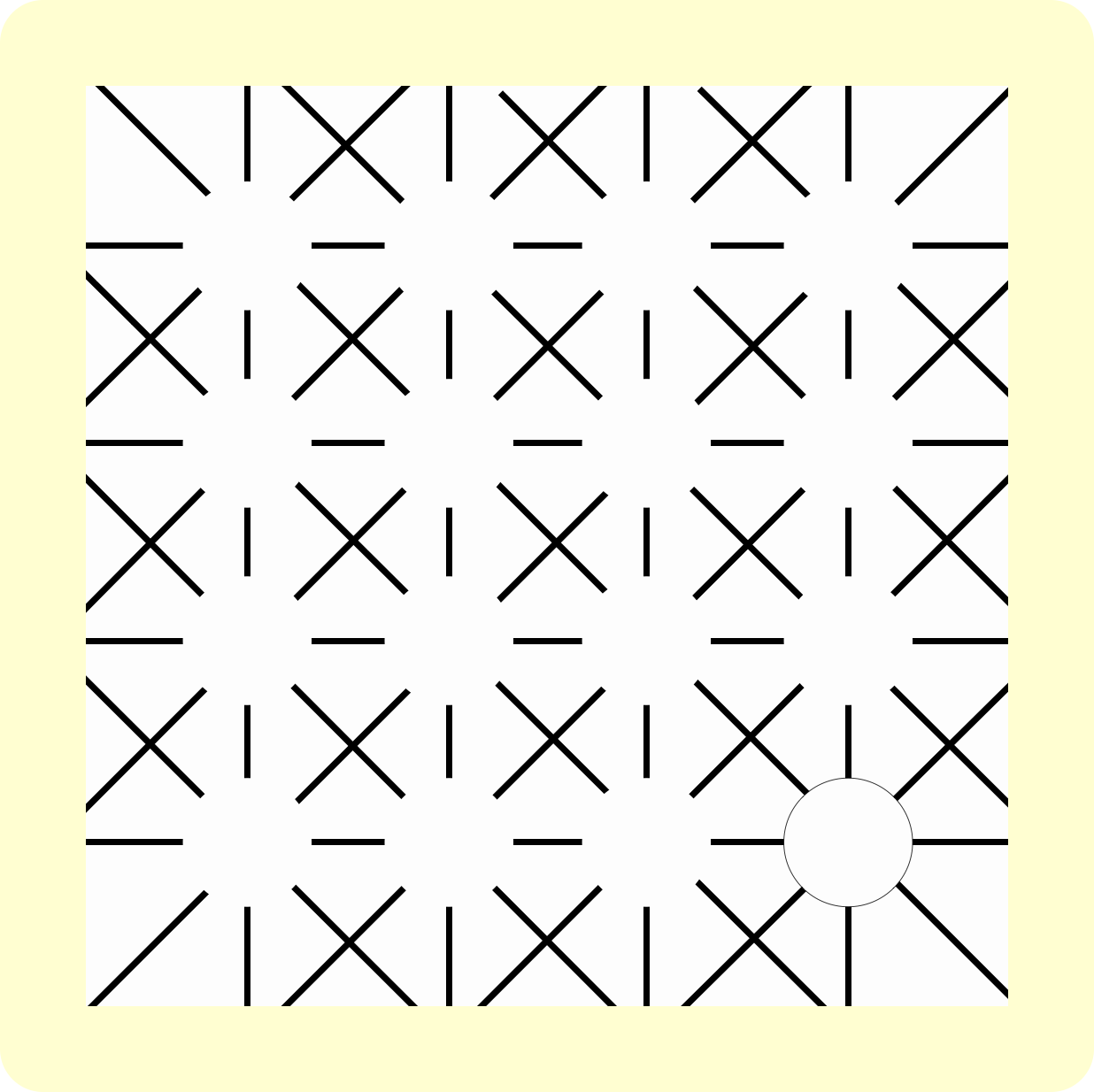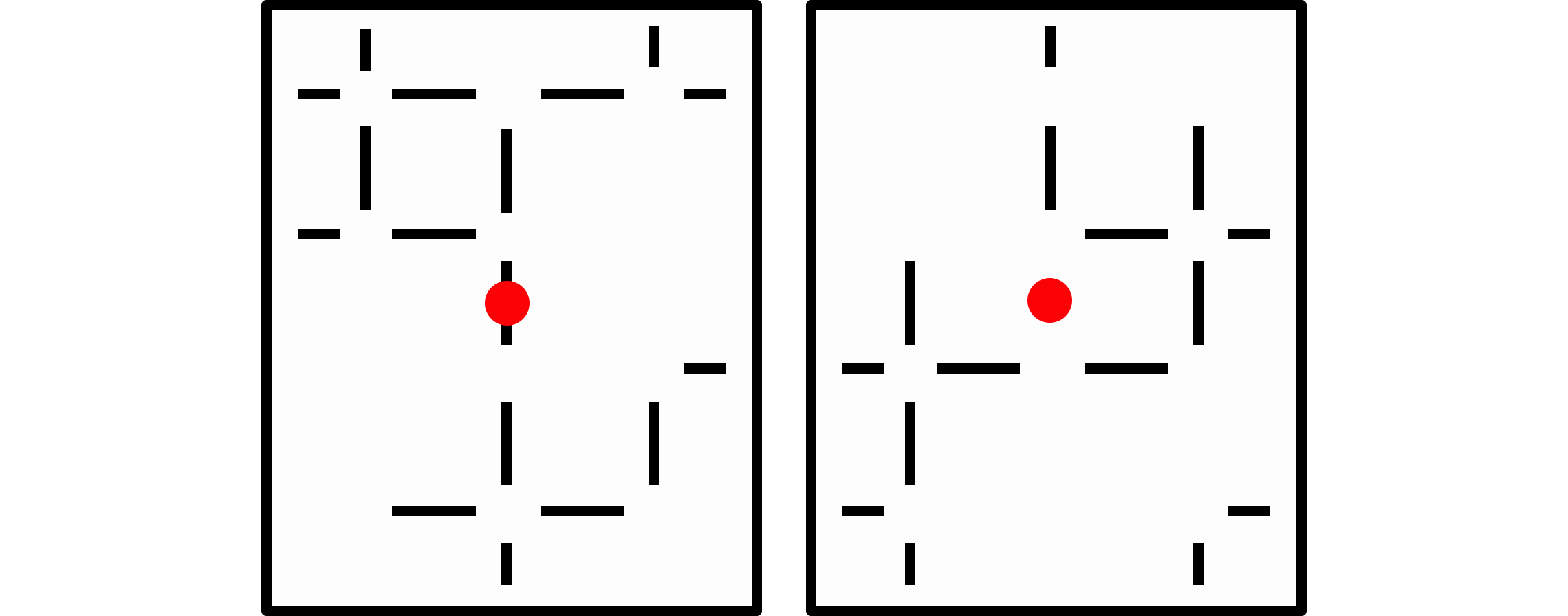
On the right there are a number of black lines, surrounded by a yellow frame. In the field of lines you might notice white disks, demarkated by line endings.
These white disks are illusionary, they are subjective (or seeming) contours created by our visual system as a probable reason to “explain” the lines ending in a systematic way (systematic: here at a circle rim). If the disk rim is drawn as a thin line itself, amazingly the illusion of the white disk, slightly brighter than the surround, vanishes – this is demonstrated with the circle at bottom right.
Ehrenstein’s (1941) abstract concisely sums up many aspects: “The basic figure for observation is an unenclosed white area equidistant from the center of which at least 4 regular black rays are drawn. Phenomenally the central area appears brighter than the surrounding area containing the rays. This brightness disappears when the rays are broad enough to enclose or almost to enclose the central area, and when the central area is enclosed by a circle. The brightness is (qualitatively) directly related to the number, length, and breadth of the rays and inversely related to the area of the central opening. It occurs in either monocular or binocular vision. … The reverse of the phenomenon occurs when the black and white are interchanged: the central area appears blacker. Hering’s hypothesis of simultaneous contrast is inadequate. …”
These subjective conours seem closely related to the Kanizsa triangle and neon colour spreading. Von der Heydt und Peterhans (1989) found in animal models that there exist neurons in the visual cortex (V2), which react to illusory contours as if they were really present.
The image below can illustrate one interesting aspect: Do the underlying mechanism reside in the eye, or in the visual cortex? The image pair contains various incomplete Ehrenstein arrangements. If you manage to fuse the image as a stereo pair, the white disks will appear which were missing before. This suggests that this illusion is not yet present in the retina but arises in the cortex, fitting well with the V2 finding mentioned above.

Ehrenstein, W. (1941). Über Abwandlungen der L. Hermannschen Helligkeitserscheinung. Zeitschrift für Psychologie, 150, 83–91.
The Scholarpedia article by Birgitta Dresp-Langley gives a full account of research on this issue.
Soriano M, Spillmann L, Bach M (1996) The abutting grating illusion. Vision Res 36:109–116 [→PDF]